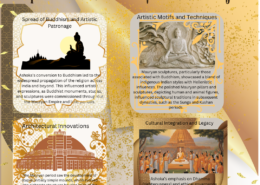Examine the Indian Constitution’s provisions for the formation of new states and the realignment of state borders. Then, contrast these laws with the territorial integration and devolution policies of other multilateral states, such as Spain and the United Kingdom.
Infographics




Carving the Map: Creating New States in India The Indian Constitution outlines a process for creating new states and reorganizing existing state boundaries. Let's delve into these provisions and compare them to territorial integration and devolution processes in other multinational states. India's PRead more
Carving the Map: Creating New States in India
The Indian Constitution outlines a process for creating new states and reorganizing existing state boundaries. Let’s delve into these provisions and compare them to territorial integration and devolution processes in other multinational states.
India’s Provisions:
Power by Parliament: Article 2 and 3 of the Constitution grant exclusive power to the Parliament to create new states or alter existing ones. This includes:
Separation of territory from existing states
Uniting two or more states or parts of states
Uniting territories with existing states
Presidential Recommendation: Bills for creating new states require a recommendation from the President.
State Legislature’s Input: The concerned state legislature must have the opportunity to express its views before Parliament makes a final decision.
Comparison with Other States:
Spain: A more decentralized approach. Regions in Spain enjoy considerable autonomy and can negotiate greater self-governance through processes outlined in the Spanish Constitution. This fosters a sense of regional identity while maintaining national unity.
United Kingdom: Devolution has granted Scotland, Wales, and Northern Ireland greater control over their internal affairs. However, unlike Spain, the UK Parliament retains ultimate authority over territorial changes.
Key Differences:
Centralized vs. Decentralized: India’s process is centralized, with Parliament holding the sole power for state creation and boundary changes. Spain and the UK allow for more regional control.
Negotiation vs. Imposition: Devolution in Spain and the UK allows for negotiation between regional governments and central authorities. India’s process can appear more top-down, with limited negotiation opportunities.
Ethnic and Cultural Considerations: While India considers regional aspirations, its process doesn’t explicitly address ethnic or cultural factors that might drive demands for new states. Spain and the UK have structures that accommodate regional identities to a greater extent.
Debates and Considerations:
Balancing National Unity with Regional Aspirations: Finding the right balance between accommodating regional aspirations for greater autonomy and maintaining national unity is a constant challenge.
Fair Representation and Development: Concerns exist that the current process might favor larger states and underrepresent smaller regions in terms of resources and development.
Conclusion:
India’s process for creating new states offers flexibility but is centralized. While it ensures national integrity, it may not fully address regional concerns. Spain and the UK’s models offer greater regional autonomy but might require adjustments to address potential fragmentation. Ultimately, each country strives to find a balance between national unity, regional aspirations, and fair representation within its specific historical and political context.
See less